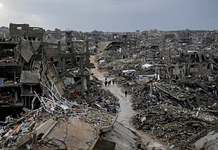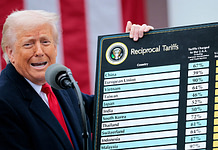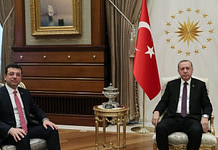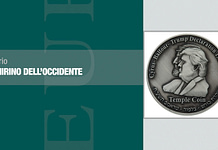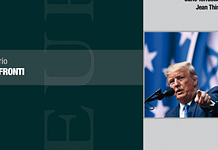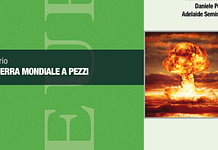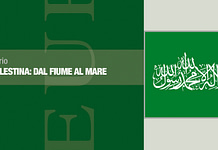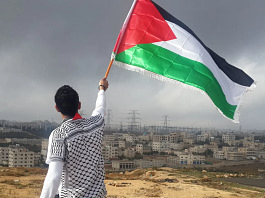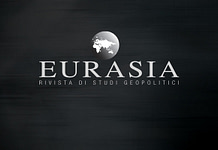Entrevista con Daniele Scalea: «El desafío total»
Muchos hablan y escriben sobre geopolítica, pocos entienden realmente algo. Daniele Scalea es uno de éstos. Joven, 25 años, licenciado en Ciencias Históricas por la Universidad de Milán, Daniele Scalea, que participa desde hace años en la redacción de Eurasia, ha debutado con una obra de gran profundidad, demostrando que las orillas del lago Mayor (vive en Cannobio) pueden ser un observatorio privilegiado para comprender y explicar los acontecimientos del mundo que nos rodea. No soy sólo yo quien lo afirma, sino también el general Fabio Mini, que ha escrito el preámbulo del nuevo libro de Daniele.El general Mini explica “Podemos decir con seguridad que Daniele Scalea ha escrito un tratado de alta geopolítica. Ha descrito el mundo actual tratando de interpretarlo a la luz de las teorías clásicas de la geopolítica, confirmando, por si fuera necesario, su validez metodológica. Ha tomado como objeto de examen todos los principales actores mundiales, aportando una visión apasionada. No hay nada más que decir.”
Dimitri Rogozine: «Non au NATO-centrisme et à l’encerclement de la Russie»
Pour le numéro consacré à La Russie et le système multipolaire de la revue Eurasia une interview exclusive de Dimitri Rogozine, ambassadeur de la Fédération Russe à l’OTAN, par Tiberio Graziani et Daniele Scalea sur l’avenir de l’OTAN (« déchirée par des problèmes nationaux, financiers et idéologiques ») et de la coopération avec la Russie. L’ambassadeur a critiqué la « Nato-centrisme » et relancé la proposition du président russe Medvedev pour un accord sur la sécurité européenne qui « tourne vers l’extérieur tous les canons du continent », en empêchant l’irruption d’un nouveau conflit en Europe.
«La politique des USA et Israël est sans issues, l’époque du colonialisme est finie»
Antonio Grego et le directeur Tiberio Graziani ont rencontré pour « Eurasia » Son Excellence l’Ambassadeur de la République Islamique d’Iran près le Saint Siège Hojjatol Islam Ali Akbar Naseri.
Dans cet entretien l’ambassadeur a parlé de l’imminente conférence sur le désarmement nucléaire convoquée par l’Iran et, évidemment, du dossier atomique qui concerne la République islamique, en réaffirmant les intentions pacifiques de Téhéran et en attaquant la politique des USA et d’Israël. L’ambassadeur Naseri a exprimé son appréciation pour l’entente trouvée par l’Iran avec divers pays, qui, à son avis, renforcera la paix dans le monde ; il a lancé un « appel » au Vatican pour qu’il défende les droits des peuples par rapport aux puissances néocoloniales.
Answer to Professor P. Kelly
Professor Philip Kelly, respected expert in geopolitics, have done an interesting review of Tiberio Graziani's paper published in no. 1/2010 of Italia “Eurasia” journal. In his opinion, world isn't multipolar but still unipolar, Russia isnt' able to involve other continental poles in a common geopolitics of Eurasian safety which exclude Thalassocracy, European Union deserve to be included among hegemonic players more than others, in particular than India, Latin America hasn't an important role in world geopolitics. Here the answer by T. Graziani and D. Scalea.
Some Geopolitical Remarks on the Arctic Region
The geopolitical history of the Arctic can be divided, in a preliminary approximation, into at least three cycles. A first great cycle, which we can call the cycle of great exploration and of the initial Arctic maritime activity (maritimisation) can be defined starting around 1553, that is, when the English navigator Hugh Willoughby began searching for a North-East passage, and going to the second half of the 1820s. With the new entrant in the circum-polar navigation club, frictions arose that marked the successive phase of the geopolitical history of the Arctic. This is the cycle of sovereignty or territorial claims, which began in 1826 with the delimitation of the frontier and terminated in 1991 with the dissolution of the USSR. The third cycle, which we can define as Arctic regional identity or multilateralism, placed between 1990 and the first years of this century, is marked by Moscow’s slight commitment – geopolitically fallen back into itself after the collapse of soviet structure – in supporting its own regional interests, by the renewed tensions between Canada and the US, by the timid presence of the European Union, which states the so-called policy of the Nordic Dimension, and, in particular, by some international or multilateral initiatives.
Breve nota sobre el Ártico
La historia geopolítica de la región Ártica puede ser subdividida, en una primera aproximación, al menos en tres ciclos. Un primer gran ciclo, que podríamos denominar el ciclo de las grandes exploraciones y de la primera maritimización ártica, puede situarse entre 1553, es decir, cuando el navegador Hugh Willoughby partió en busca del paso del Nordeste, y la segunda mitad de los años veinte del siglo XIX. Con el ingreso del recién llegado en el club de las naciones circumpolares comienzan a germinar las fricciones que marcarán la posterior historia geopolítica de la región Ártica. Es este el ciclo de la soberanía o de las reivindicaciones territoriales, que empiezan precisamente en 1826 con una delimitación de las fronteras que termina en 1991, con la disolución de la URSS. El tercer ciclo, que podríamos definir de la identidad regional ártica o del multilateralismo y que podemos situar entre 1990 y los primeros años del siglo actual, está marcado por el escaso compromiso de Moscú –geopolíticamente replegado sobre sí mismo tras el colapso del edificio soviético –en el sostenimiento de sus intereses regionales, por las renovadas tensiones entre Canadá y los Estados Unidos, por una tímida presencia de la Unión Europea, que enuncia la llamada política de la Dimensión Nórdica, y, en particular, por algunas iniciativas internacionales o multilaterales.
Os reaccionários coloridos
Entrevista de Davide D’Amario efectuada a Claudio Mutti, “Rinascita”, 15 de Janeiro de 2010. "Professor Mutti, tem-se interessado pelo desenvolvimento da Revolução islâmica no Irão desde que, há trinta anos, publicou alguns escritos do Imã Khomeini nas Edizioni all’insegna del Veltro. Actualmente acompanha o desenrolar da política iraniana por intermédio do observatório da revista de estudos geopolíticos “Eurásia”, da qual é redactor. Que lugar ocupa o Irão actualmente no contexto geopolítico?" ...
Rusia, clave de bóveda del sistema multipolar
El nuevo sistema multipolar está en fase de consolidación. Los principales actores son los EE.UU., China, India y Rusia. Mientras la Unión Europea está completamente ausente y nivelada en el marco de las indicaciones-diktat procedentes de Washington y Londres, algunos países de la América meridional, en particular Venezuela, Brasil, Bolivia, Argentina y Uruguay manifiestan su firme voluntad de participación activa en la construcción del nuevo orden mundial. Rusia, por su posición central en la masa eurasiática, por su vasta extensión y por la actual orientación imprimida a la política exterior por el tándem Putin-Medvedev, será, muy probablemente, la clave de bóveda de la nueva estructura planetaria. Pero, para cumplir con tal función epocal, tendrá que superar algunos problemas internos: entre los primeros, los referentes a la cuestión demográfica y la modernización del país, mientras, en el plano internacional, tendrá que consolidar las relaciones con China e India, instaurar lo más pronto posible un acuerdo estratégico con Turquía y Japón y, sobre todo, tendrá que aclarar su posición en Oriente Medio y en Oriente Próximo.
Russia Keystone of the Multipolar System
The new multipolar system is being consolidated. The main actors are the US, China, India and Russia. While the European Union is completely absent and in hiding in the framework of indications-diktats coming from Washington and London, some South American countries, particularly Venezuela, Brazil, Bolivia, Argentina and Uruguay, are showing their steady willingness to actively participate in the construction of the new world order. Russia, with its central position in the Euro-Asian land mass, its vast size and its current orientation stamped on foreign policy by the Putin-Medvedev tandem, will probably be the keystone in the new planetary structure. But to achieve this epochal function, it must overcome some internal problems: first of all, those regarding the demographic question and the modernization of the country, while on the international level it must consolidate relations with China and India and establish strategic agreements with Turkey and Japan as soon as possible. Above all, it must clarify its position in the Near and Middle East.
Afghanistan 1979. The Destabilization of the Near- and the Middle-East Regions and the Collapse...
Among the many events in international relations, two are, in our opinion, of pivotal importance for their contribution to the upsetting of the former geopolitical asset, based at the time on the conflict between the United States and the URSS. We are speaking of the Islamic revolution in Iran and of the Russian military involvement in Afghanistan. Following the takeover of Iran by the Ayatollah Khomeyni, one of the essential pillars of the western geopolitical architecture, with the USA as a leader, was destroyed. The Washington strategists, in agreement with their bicentenary “geopolitical of chaos”, persuaded the Iraq under Saddam Hussein to start a war against Iran. The destabilization of the whole area allowed Washington and the Western Countries enough time to plan a long-lasting strategy and in the meantime to wear down the soviet bear.


